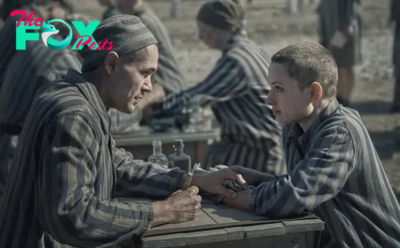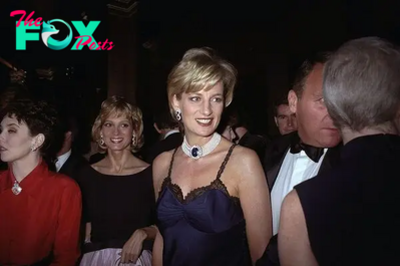Entertainment
Ensemble Join at Carnegie Corridor mines the Weimar Period for uncommon musical jewels – Seen and Heard Worldwide
 United States Varied: Ensemble Join. Weill Recital Corridor, Carnegie Corridor, 9.4.2024. (RP)
United States Varied: Ensemble Join. Weill Recital Corridor, Carnegie Corridor, 9.4.2024. (RP)

Erwin Schulhoff – Concertino for Flute, Viola and Double Bass
Weill – String Quartet No.1, Op.8
Berg – Lyric Suite
Gershwin – ‘Lullaby’
Carnegie Corridor’s deal with the Weimar Period this season has supplied thrilling forays into the epoch and its music. Ensemble Join’s contribution was an interesting mixture of chamber music by composers who outlined the zeitgeist of these years in Europe and America. And as was to be anticipated, the younger string Gamers of Ensemble Join carried out brilliantly and made every bit a singular musical journey.
The deal with the Weimar Period has delivered to Carnegie Corridor many unfamiliar works by each well-known composers and those that are all however forgotten. Typically, the items which might be carried out have been composed throughout the pivotal early levels of their careers. There have been to be no late-career autumnal bursts of glory for Erwin Schulhoff, Kurt Weill, Alban Berg or George Gershwin, whose music was heard at this live performance – none would dwell previous the age of fifty.
The Austro-Czech composer and pianist Erwin Schulhoff died from tuberculosis on the age of 48 in Wülzburg jail in Bavaria. He was Jewish, however for the Nazis the truth that he was each a communist and a Soviet citizen was equally vexing. With immigration to the West all however unimaginable after the Nazi occupation of Czechoslovakia in 1939, he opted to take his household to the Soviet Union. Their pasSports arrived too late to avoid wasting him.
Schulhoff’s experiences as a conscript within the Austrian Military throughout World Conflict I influenced each his political opinions and his musical model. After the struggle, he deserted the post-Romantic model of his youth. By the point he composed the Concertino for Flute, Viola and Double Bass in 1925, he had additionally left behind the aesthetics of the Second Viennese College for these of French Neo-Classicism, Slavonic folks music and American kinds starting from jazz to ragtime.
The melodies, colours and rhythms of folks tunes pepper the four-movement Concertino. It was the proper automobile for flautist Anjali Shinde, violist Isabella Bignasca and double bassist Marguerite Cox to show their particular person abilities and communicative abilities as an ensemble. The second motion, Furiant: Allegro Furioso, was an excellent journey with Shinde on piccolo and Bignasca and Cox serving because the rhythm part.
Composed in 1923, Kurt Weill’s String Quartet No.1 was the work that first introduced him worldwide consideration. His instructor, Ferruccio Busoni, hailed his 23-year-old pupil’s efforts for its ‘splendid qualities’. Weill fled Nazi Germany in 1933 and was the one one of many 4 composers right here who lived to see the demise of Hitler and the Third Reich.
Cellist Frankie Carr repeated Weill’s well-known maxim in introducing the piece: ‘I’ve by no means acknowledged the distinction between severe music and lightweight music. There’s solely good music and unhealthy music.’ Carr shortly added that the String Quartet is likely one of the ‘good ones’. It might not sound just like the musical theater works that introduced Weill fame, however his wit and daring are at all times evident.
Carr and Ramón Carrero-Martínez have been joined by violinists Isabelle Ai Durrenberger and David Bernat in a efficiency of the Weill that was notable for its depth of expression. Within the opening Introduktion, Durrenberger and Bernat displayed the sweetness and finesse of their taking part in in a few of the most lyrical passages of the quartet. Within the Scherzo and Choralphantasie, it was Carr who impressed with the richness of the tone he drew from his cello. Ensemble Join quartet’s taking part in within the contrapuntal writing within the latter was distinctive for its precision and class.
Introducing Berg’s Lyric Suite, violinist David Bernat supplied the salient recommendation that for those who had not already learn this system notes, ‘don’t’. As he defined, Berg composed the piece within the mid-Twenties and, for the subsequent half century, it was carried out and obtained on solely musical phrases. In 1977, some forty years after the composer’s demise in 1935, its ‘secret program’ was revealed. Bernat urged that it was greatest simply to soak up the music and ignore the backstory.
The story is fascinating, nevertheless, as Berg meant the Lyric Suite to be a memorial to an extended, passionate, extramarital affair that he saved secret from his spouse, Helene, who died in 1976 with no information of it. Berg had inscribed an early printed version of the rating to his paramour with the phrases ‘a small monument to an amazing love’.
Bernat was joined by violinist Rubén Rengel, an Ensemble Join alum, violist Isabella Bignasca and cellist Thapelo Masita in a searing, probing efficiency of the Lyric Suite. Berg organized the ‘romantic’ actions for string orchestra, however probably the most stunning and transferring is the delicate Largo desolato, composed in extreme 12-tone model. On this efficiency, there have been moments of nice magnificence all through, particularly within the beautiful taking part in of the violins. The ultimate measures, nevertheless, have been probably the most stunning and poignant because the music pale away into silence.
Gershwin epitomizes the Roaring Twenties in America. The kid of Russian and Lithuanian Jewish immigrants, he straddled the worlds of common and classical music. Weill’s phrases on gentle versus severe music apply to Gershwin in spades. But he struggled to make his mark on this planet of classical music after his success on Broadway.
‘Lullaby’ for string quartet was composed round 1920 when Gershwin was nonetheless pounding out songs on Tin Pan Alley. It was probably an educational train by a composer nonetheless in his early twenties. ‘Lullaby’ was carried out just a few instances in non-public settings by associates throughout Gershwin’s lifetime, and it was forgotten for years after his demise on the age of 40 in 1937.
Ira Gershwin, the composer’s brother, described the quick, considerably repetitive piece as ‘charming and type’. That it was, and delightful too as carried out by Durrenberger, Bernat, Carrero-Martínez and Masita.
Rick Perdian
-

 Entertainment2h ago
Entertainment2h agoA Roadmap To The Best Post Malone Tattoos And Their Meanings
-

 Entertainment3h ago
Entertainment3h agoThe Story Behind Peacock’s The Tattooist of Auschwitz
-

 Entertainment3h ago
Entertainment3h agoNetflix’s Flimsy A Man in Full Makes Tom Wolfe’s Epic Novel Feel Small
-

 Entertainment4h ago
Entertainment4h agoIncredible World Record is Sitting in One New York Backyard
-

 Entertainment5h ago
Entertainment5h agoBritney Spears gets into fight with boyfriend Paul Richard Soliz at Chateau Marmont, ambulance called: She’s ‘home now and is safe’
-

 Entertainment5h ago
Entertainment5h agoRob Marciano’s former co-workers defend his ‘professional,’ ‘positive’ behavior after sudden ABC firing
-

 Entertainment9h ago
Entertainment9h agoThe History Behind the Met Gala
-

 Entertainment9h ago
Entertainment9h agoDan Schneider Sues Quiet on Set Docuseries Producers for Defamation



























